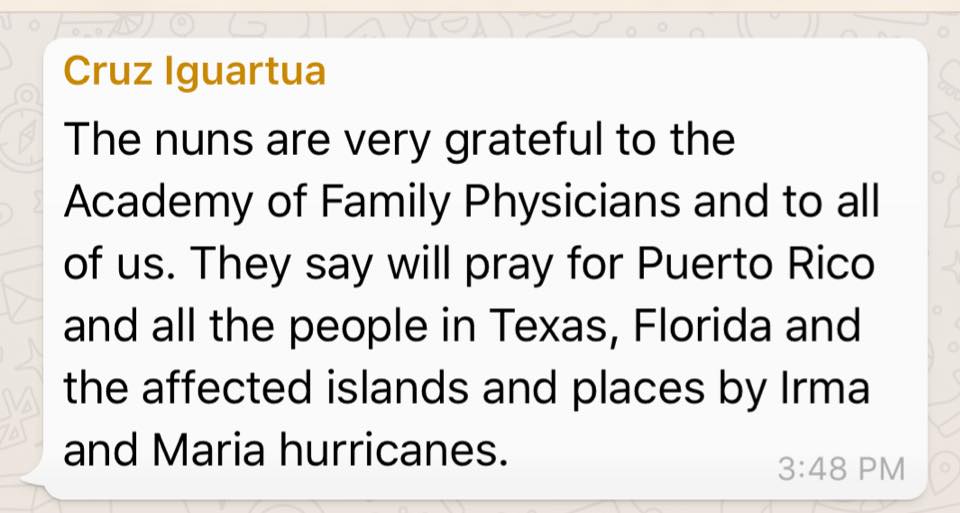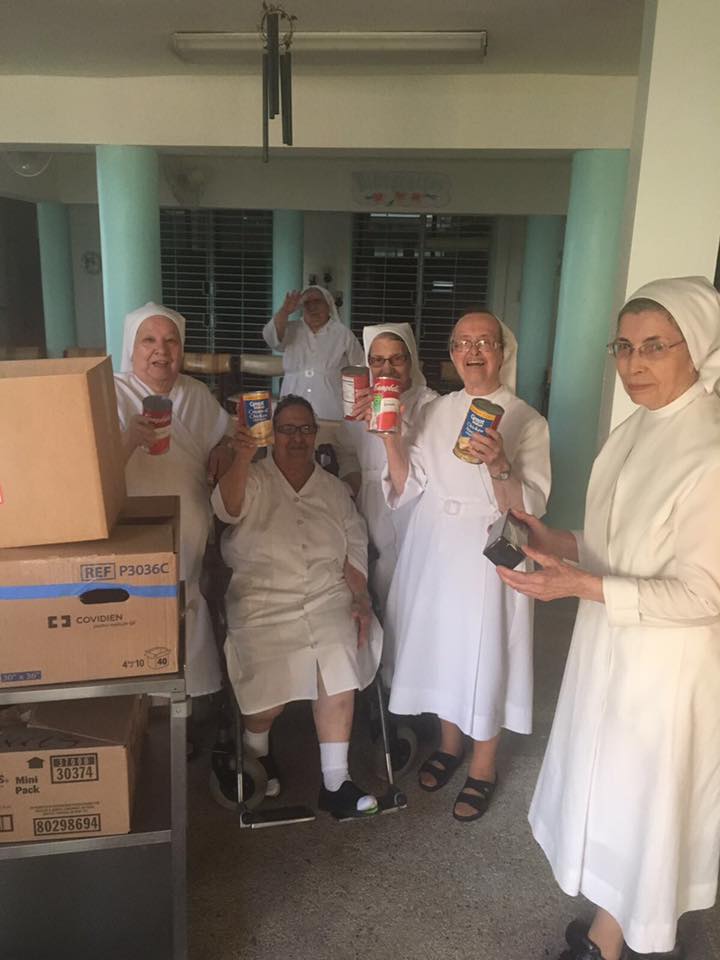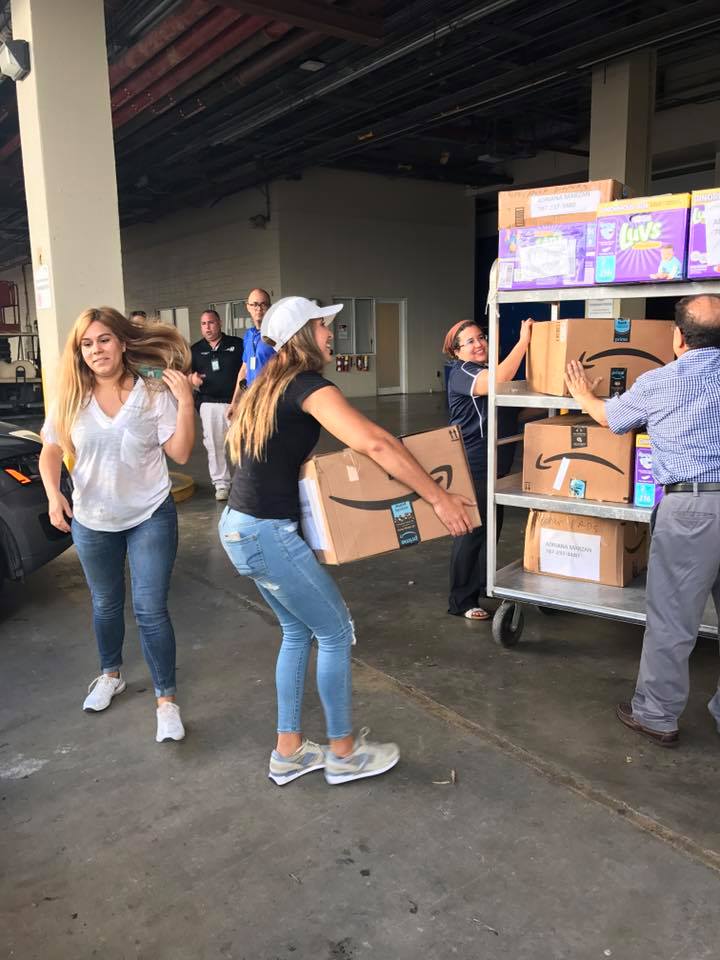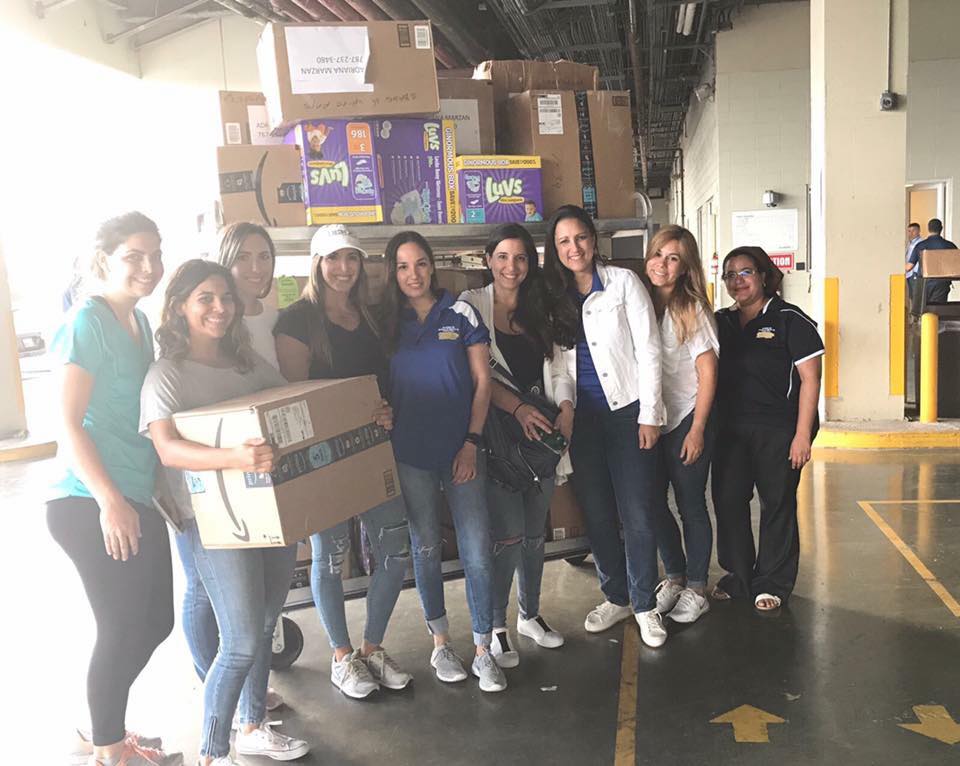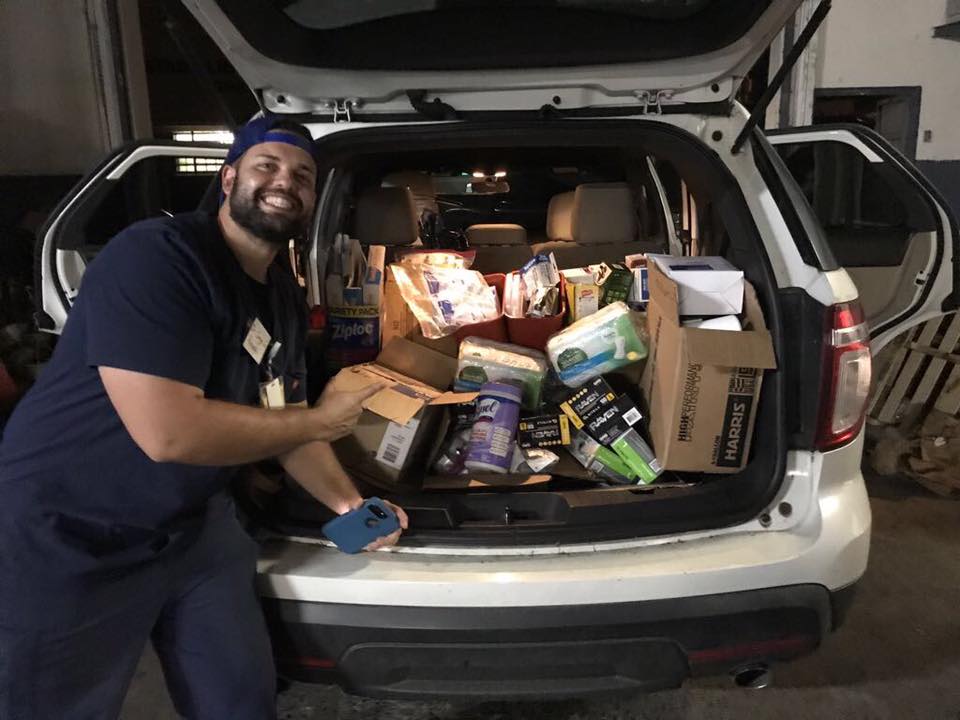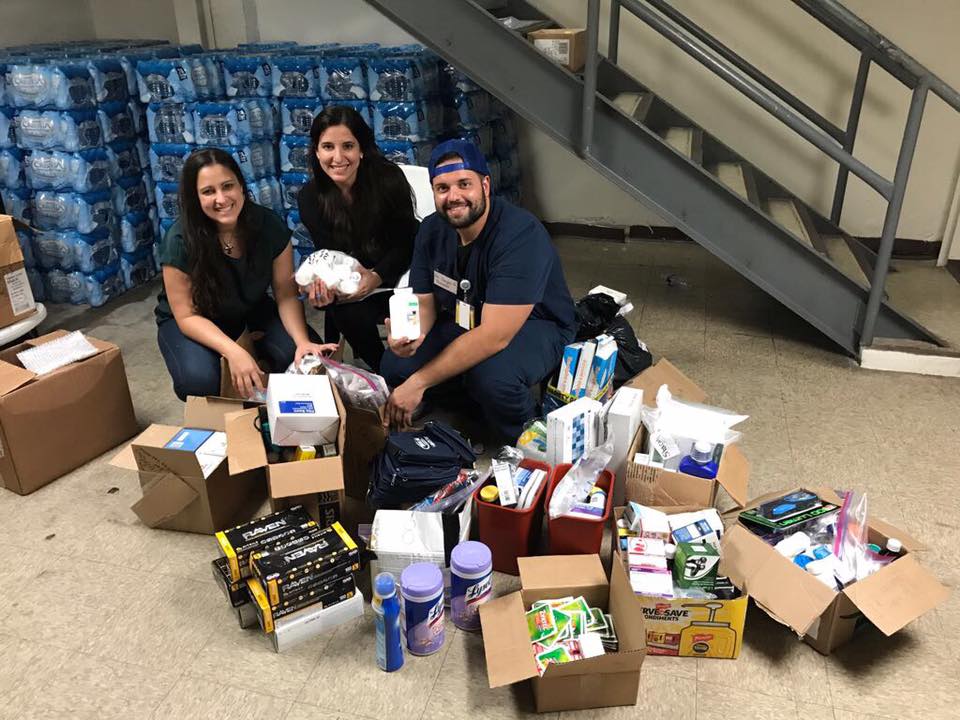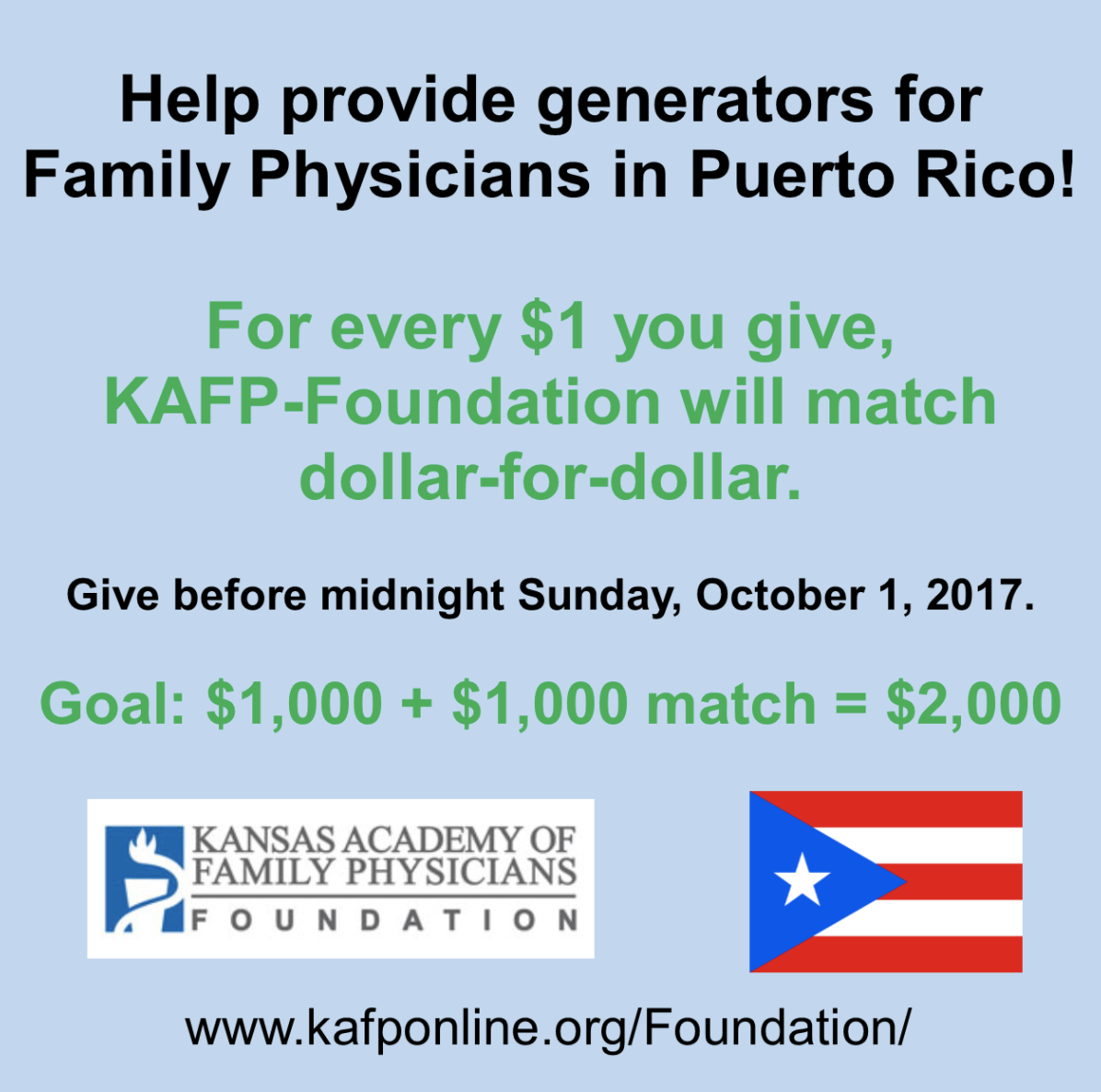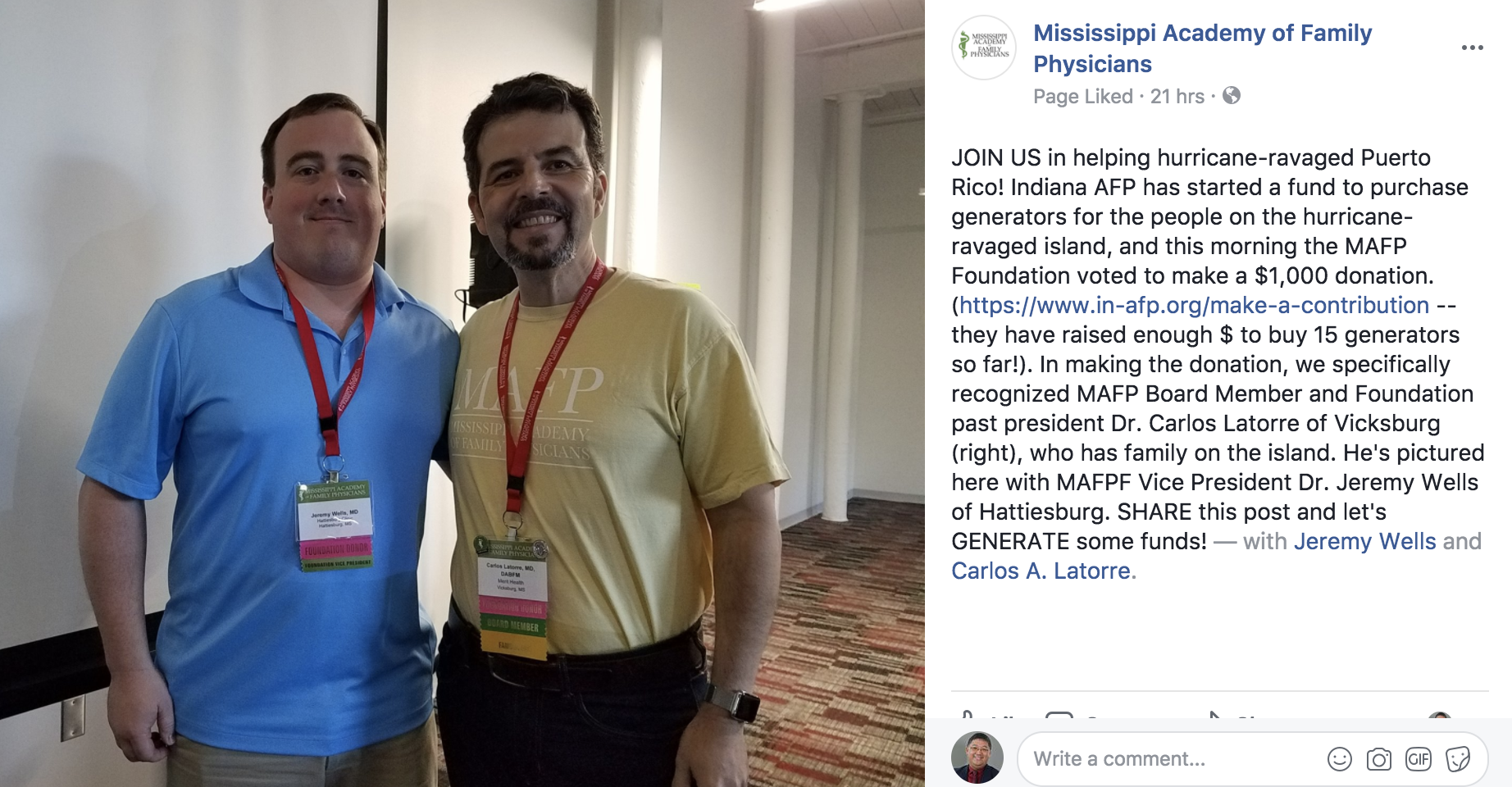The plight of Puerto Rico has been broadcast daily since Category 4 Hurricane Maria slammed into the island less than 2 weeks ago. The Family Medicine community has been proactive in the relief effort, even before Maria hit Puerto Rico.
Our friend and colleague Dr. Kim Yu has been in contact with the Puerto Rico Academy of Family (PRAFP) Physicians and has helped organize an effort and a campaign to raise money for electric generators for the people there, especially since it's been reported that 95% of people in Puerto Rico are still without power. The goal is 60 generators, since this year marks the 60th anniversary of the PRAFP. As of this posting, we have already reached 20 generators!
On Saturday, September 30, 2017, we broadcast a Facebook Live with Kim Yu, Alex McDonald, and myself to raise awareness for this fundraising campaign, and for Kim to share some of the stories that are happening in Puerto Rico right now. Please contribute to this link right now, and thanks to our colleagues at the Indiana Academy of Family Physicians for setting this up: https://www.in-afp.org/give
Included in the video segments below include a statement from Dr. Carlos Cestero who is the President of the Puerto Rico Academy of Family Physicians read by Kim Yu. How did Kim get started in this effort? She answers that question in a video below. In addition to raising funds for generators, Kim talks about other things that you can do to help Puerto Rico, including volunteering your physician skills on site in Puerto Rico. If you'd like more information on any of this, please reach out to Kim Yu on twitter at @DrKKYu
Also in the program, we talked about National Primary Care Week which is taking place now from October 1-7, 2017. In addition, we talked about lighter topics like the origins of Alex McDonald's twitter name, and how much fun we had at the recent AAFP Family Medicine Experience conference. Below, I broke down last night's video into shorter segments for your review and enjoyment. Please share this post with friends and colleagues to continue to raise awareness and to continue to raise funds for the people of Puerto Rico!

